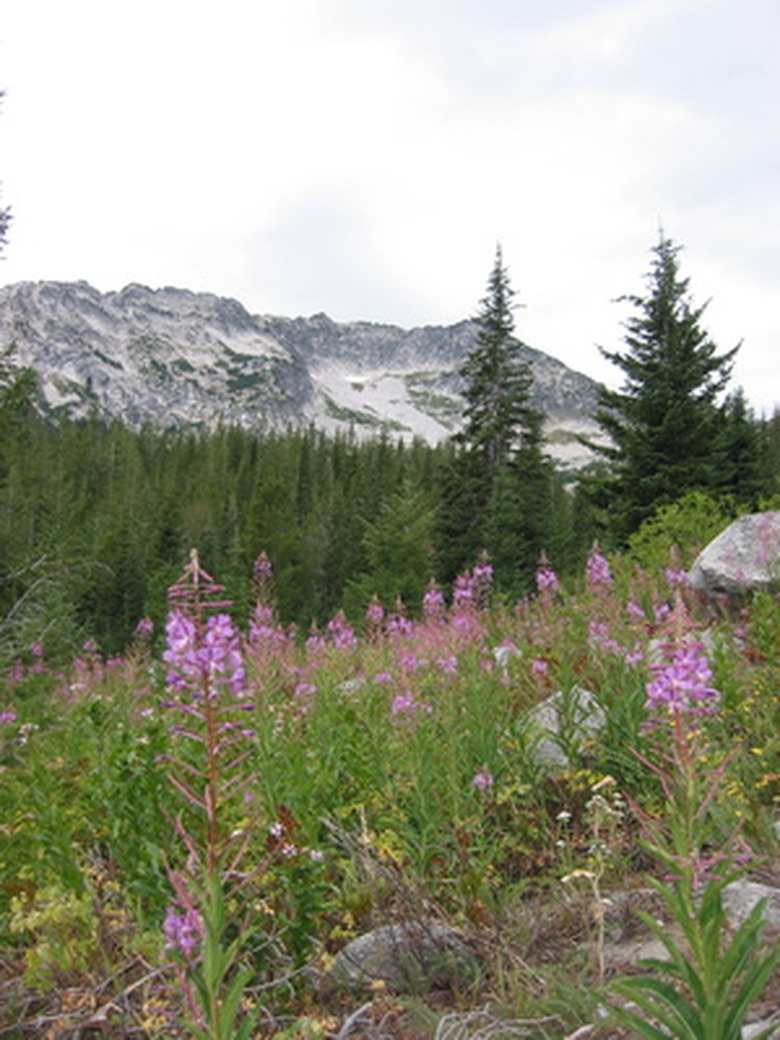Plants & Flowers Found In Eastern Washington
Using native plants and flowers in an Eastern Washington garden has several advantages. The plants will have evolved defenses to cope with the area's insects and disease microorganisms. They'll be comfortable with your soil and weather, requiring less water and fertilizer than non-natives. Finally, the plants offer food, shelter and pollen to attract birds, pollinating insects and wildlife to a landscape.
Antelope Bitterbush
Antelope bitterbush (Purshia tridentata), a rose family shrub, grows 4 to 5 feet high. Its native habitat is on dry slopes at higher elevations from the Pacific Northwest to Arizona. Its short, gray-barked branches have spreading stems that may root where they touch the soil. The branches also produce single, tubular creamy-white flowers between May and July. Deep green, three-lobed leaves curl up in hot weather to expose gray, down undersides. The Lady Bird Johnson Wildflower Center recommends drought-tolerant antelope bitterbush for erosion control. Plant it in full sun and dry soil.
- Using native plants and flowers in an Eastern Washington garden has several advantages.
- Its short, gray-barked branches have spreading stems that may root where they touch the soil.
Common Snowberry
Common snowberry (Symphoricarpos albus) is a small shrub of the honeysuckle family. Reaching 2 to 5 feet high and 4 to 6 feet wide, snowberry forms thickets on hillsides except in the Deep South. Its open branches have delicate, hollow-stemmed twigs. It bears small clusters of bell-shaped white or pink blossoms between wigs during June and July. White berries responsible for the shrub's name follow the flowers, becoming brown as they age. Common snowberry is a source of food and shelter for several species of songbirds and small mammals.The Missouri Botanical Garden has selected the snowberry cultivar 'Hancock' as one of its Plants of Merit. Standing up to 18 inches high, it has arching stems and pink or coral-colored, instead of white, berries. The berries remain on the bushes well into winter for an additional season of garden color. Plant snowberry in full sun to shade and poor, sandy or gravelly pH-neutral soil. It handles dry and moist locations. Eating the snowberries may cause diarrhea and vomiting.
- Common snowberry (Symphoricarpos albus) is a small shrub of the honeysuckle family.
- The berries remain on the bushes well into winter for an additional season of garden color.
Purple Sage
Purple sage (Salvia dorrii) is the mint family perennial made famous in Zane Grey's Western classic, "The Riders of the Purple Sage." It grows wild in the dry, open areas of Eastern Washington. Standing 2 to 3 feet high and at least as wide, it has silvery foliage and multiple, often thorny branches. In May and June dramatic spikes of blue-violet flowers rise above and complement its silvery leaves. Purple sage needs dry, extremely well-drained soil and full sun.
